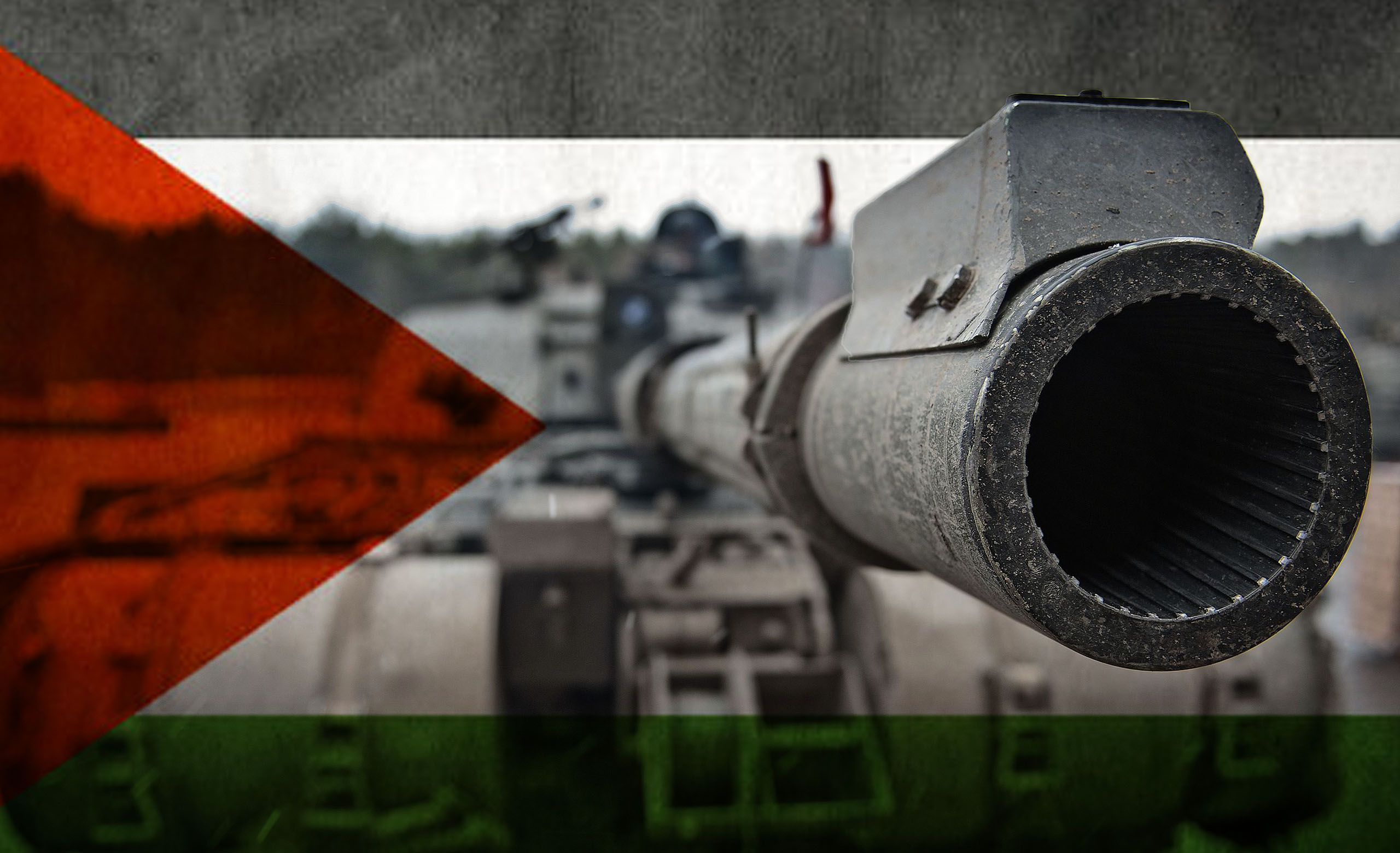The Israeli army, after much prevarication, finally started ground operations in Gaza over the weekend. But it was not a full-scale invasion. The Israeli military leaders are fully aware of the great risk to their own soldiers if they commence street-by-street fighting with troops on the ground. They are also wary of giving Hezbollah the excuse they require to widen the conflict, opening a second front on the northern border with Lebanon. So what are Netanyahu and his generals preparing for?
According to the Financial Times, Amir Avivi, the former deputy commander of the Gaza Division of the IDF: “We are not taking any chances. When our soldiers are manoeuvring we are doing this with massive artillery, with 50 aeroplanes overhead destroying anything that moves.”
In fact, the bombing stepped up on Friday to the highest intensity so far, with up to 600 targets being hit. This has now brought the number of Palestinian deaths to over 8,300, a figure that is tragically destined to continue growing.
Bellicose language
The statements of Netanyahu, his defence minister, and many important political figures and commentators inside Israel are extremely bellicose, emphasising the fact that they are at war, and that now is not the time to talk of “humanitarian pauses” or ceasefires. They are determined to crush and destroy Hamas, no matter the consequences for the civilian population of Gaza.
Netanyahu gave a speech on 29 October announcing the “second stage of the war”, in which he said: “You must remember what Amalek has done to you, says our Holy Bible”. And what is God supposed to have said, in that good book, to the ancient Israelites? In 1 Samuel 15:3, we read the following: “Now go and smite Amalek, and utterly destroy all that they have, and spare them not; but slay both man and woman, infant and suckling, ox and sheep, camel and ass.”In Deuteronomy 25:19 we find this: “…you shall blot out the memory of Amalek from under heaven…”
The language in the Old Testament is truly genocidal. These words mean nothing less than the total annihilation of a people. The Amalekites were an ancient people inhabiting the Negev desert, regarded as bitter enemies of the Israelites. And the good God of the ancient Jews – the same God that both Christians and Muslims today consider as theirs – was not of the “turn the other cheek” and “love thy neighbour” type. No, he was like all the gods of the ancient world: a vengeful and angry God, who would back his own worshippers in any war they waged against their enemies. And this is what Netanyahu invokes today!
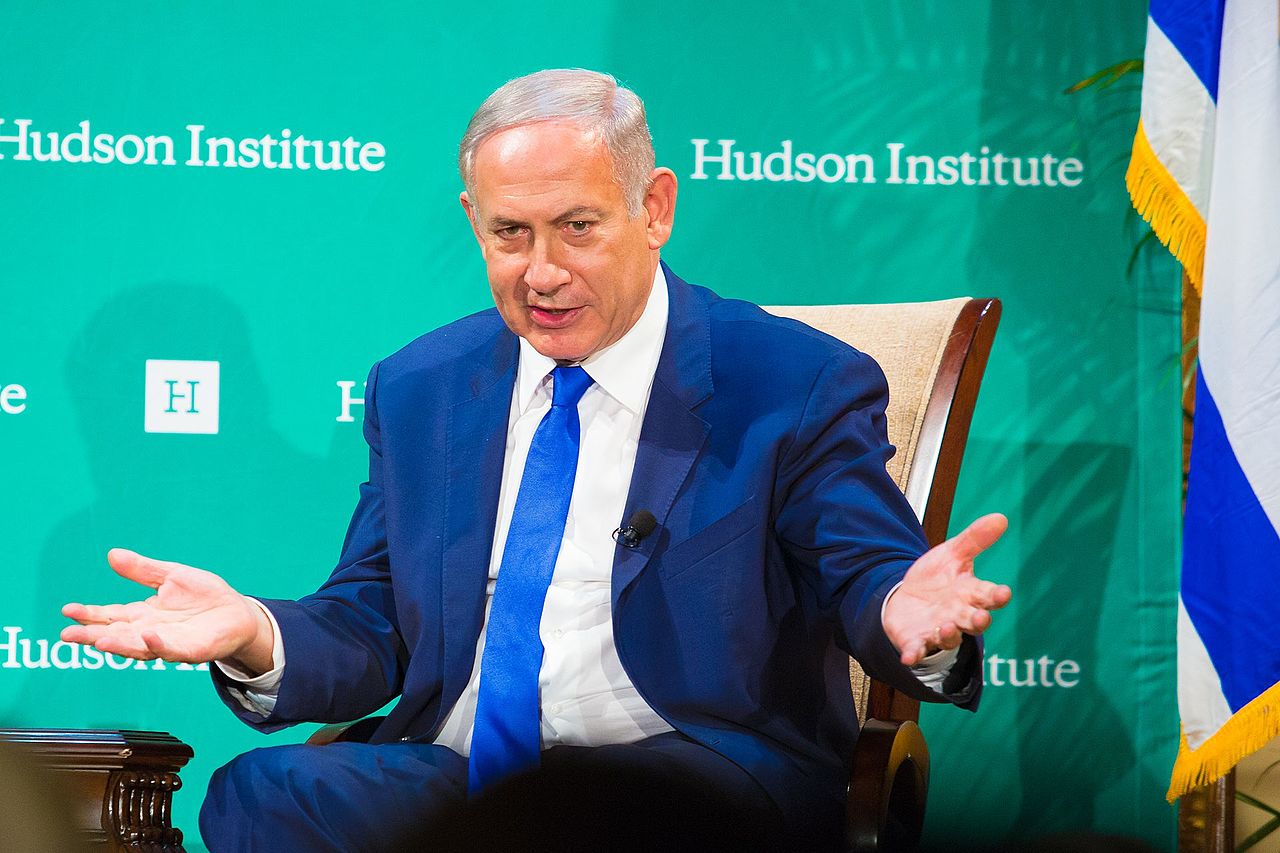 The statements of Netanyahu, his defence minister, and many important political figures and commentators inside Israel are extremely bellicose / Image: Hudson Institute, Wikimedia Commons
The statements of Netanyahu, his defence minister, and many important political figures and commentators inside Israel are extremely bellicose / Image: Hudson Institute, Wikimedia Commons
This bloodthirsty language can also be explained by his own weak position in Israeli politics. He is the prime minister, but it is common knowledge that, if there had been elections before the 7 October attacks, he would most likely have been voted out. Even after the attack, the polls reveal that Netanyahu is profoundly unpopular and deemed responsible for the massive intelligence failure that allowed Hamas to take the Israeli security forces by surprise. A large majority wants Netanyahu to resign as soon as the war is over.
In an attempt to push back on the criticism, he has tried to unload the blame for the total unpreparedness of the government and the security forces onto others. On Sunday, he tweeted that the tops of the security services had assured him that everything was under control as far as Hamas was concerned. Such was the backlash against him that, within a few hours, he had to delete the tweet and issue an apology.
Everybody is aware of the fact that the promotion of Hamas as a counterweight to the Palestinian Authority was Netanyahu’s doing. In fact, an editorial in Israel’s oldest newspaper, Haaretz, recently denounced Netanyahu for having allowed billions of dollars to be transferred to Hamas through Qatar. He was warned that this was a dangerous strategy, but he went ahead regardless, viewing it as a means of keeping the Palestinians divided between Gaza and the West Bank. He believed this policy of keeping the Palestinians weak and divided would render completely impractical the idea of a two-state solution, and would allow for the continued annexation of Palestinian land.
Now, this policy has come back to bite him, and he is manoeuvring desperately to hold onto his position as premier. This explains all his grandstanding and posturing as a war leader, with all the quotes from the Old Testament, and the need to obliterate the enemy people.
Now, it may not be in the powers of Netanyahu to annihilate a whole people, but he is in the process of carrying out the biggest butchery of Palestinians we have ever seen. Here, it is worth looking at what some important Israeli figures have been saying. Two prominent ones come to mind, Giora Eiland, a senior research associate at the Institute for National Security Studies and former head of the Israeli National Security Council; and Naftali Bennet, the 13th prime minister of Israel from June 2021 to June 2022, and leader of the New Right party from 2018 to 2022.
Here is how Eiland opened his statement on 12 October:
“…Israel cannot be satisfied with any other goal than the elimination of Hamas in Gaza as a military and governing body. Anything less would be an Israeli failure. […] One option is a massive and complex ground operation, with no regard to duration and cost, while the second option is to create conditions where life in Gaza becomes unsustainable. […] Israel needs to create a humanitarian crisis in Gaza, compelling tens of thousands or even hundreds of thousands to seek refuge in Egypt or the Gulf” (my emphasis).
If you thought Eiland’s view was a marginal one within the Zionist ruling elite, it would be enough to look at the humanitarian crisis that the Israeli military have already inflicted on the Palestinian people in Gaza. His words have been translated into reality on the ground. The current actions of the IDF were anticipated by Eiland: “From our perspective, every building in Gaza known to have Hamas headquarters underneath, including schools and hospitals, is considered a military target. Every vehicle in Gaza is considered a military vehicle transporting combatants…”
He goes even further when he states: “[The 7 October attack] is comparable to the Japanese attack on Pearl Harbor, which led to the launch of an atomic bomb in Japan. As a result, Gaza will become a place where no human being can exist […] there is no other option for ensuring the security of the State of Israel. We are fighting an existential war.” (My emphasis).
Again, this is what is unfolding now in Gaza.
If you perhaps expected this kind of language from a former head of national security, just look at what the ‘politician’ Naftali Bennett (himself a settler in the West Bank) has to say. He proposes “a complete siege” on the northern part of Gaza, and recommends that the IDF “continuously use firepower on Hamas all over the Strip.” And then: “To create a new security strip 2km deep into the territory of the strip along our entire border, a permanent strip. This is through the use of massive firepower and ground forces, and engineering. Imagine bulldozers simply levelling the area.”
The “second phase” of the war
Achieving all this across the whole of Gaza, however, is not so easy. For a start, the Palestinians will refuse to take all this lying down. They are resisting in whatever way they can, and they have huge sympathy from workers and youth all around the world.
So what is actually happening on the ground, from a military point of view? The IDF is not going to make its plans public, of course. So, we have to base ourselves on what they are doing now, and also attempt to understand the situation from what serious commentators are saying.
Israel’s minister of defence, Yoav Gallant, has stated that the Israeli military has now entered “a new phase in the war”. This is not a full, all-out ground invasion. It involves a massive increase in aerial bombardment, combined with limited numbers of tanks and ground troops going in. This is logical if one considers how bloody street-to-street, house-to-house fighting would be, with a huge risk to the Israeli soldiers. The army would be slowed down in the myriad of streets, many of them reduced to rubble, creating a situation where Hamas fighters could carry out surprise attacks, ambushes, and so on, including the use of anti-tank rockets, which has already taken place in the first skirmishes.
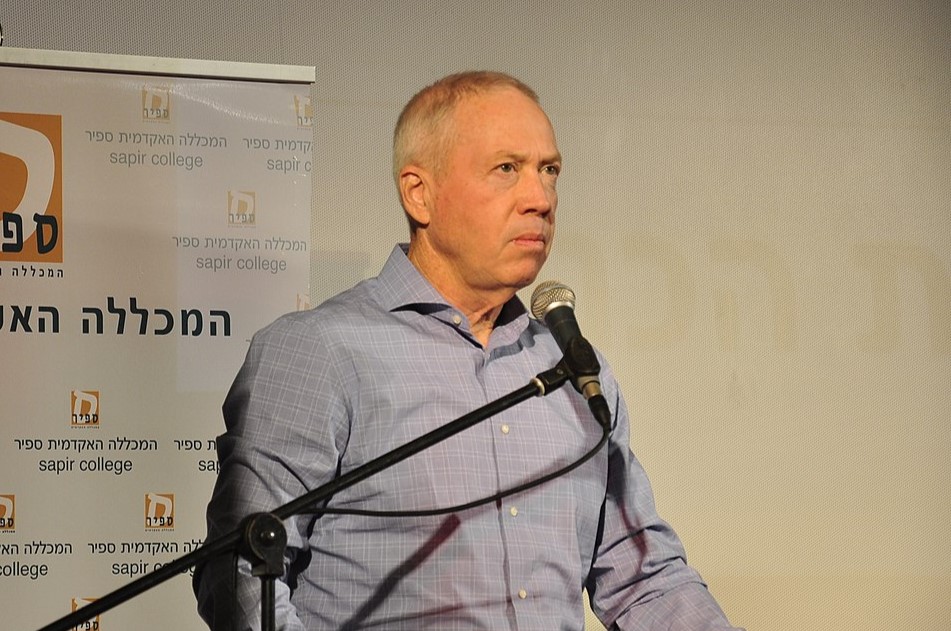 Israel’s minister of defence, Yoav Gallant, has stated that the Israeli military has now entered “a new phase in the war” / Image: public domain
Israel’s minister of defence, Yoav Gallant, has stated that the Israeli military has now entered “a new phase in the war” / Image: public domain
The Israeli army chiefs are in close contact with the top brass of the US military, who are also providing advice based on past experiences of taking densely populated areas, such as Mosul (see our previous article) or Fallujah in the past. And as former head of the USA Central Command, General Joseph Votel, has warned: “it will be bloody, brutal fighting”. Gallant himself has stated that the war could last for months. Bennet, quoted earlier, has gone as far as stating that the war could take “between 6 months and 5 years.” However long it lasts, it will not be a quick operation of a few weeks, as in past invasions of Gaza.
There were two options facing the Israeli military, 1) an all-out land invasion, or 2) a more drawn-out campaign, in effect a kind of siege of Gaza.
They wish to avoid the first option, because they understand that it could very quickly trigger a wider conflict, as it could suck Hezbollah into the fighting on Israel’s northern border. For now, it seems Hezbollah is confining its involvement to low-level skirmishes, without entering into an all-out war.
Hezbollah is not a rag-tag militia. It has troops hardened by its intervention in the Syrian civil war, and the capability to mobilise between 30,000 and 50,000 fighters, counting on an arsenal of more than 100,000 rockets. In 2006, the IDF had to withdraw after staging a rushed invasion of South Lebanon. Already, the mere threat from the north has seen around 100,000 Israeli soldiers mobilised to the Lebanese border. The Israeli military would prefer things to remain at this level, without having to engage in war on two fronts.
The threat of a wider involvement, not just of Hezbollah but of other Iranian proxies in the region, is real. Already, there have been attacks on US bases in Iraq and Syria, to which the US has been forced to answer with the bombing of what are considered bases of Iranian-backed militias in both countries. Hamas has, in fact, issued a call for attacks to be carried out on US and Israeli interests in the region, including US military bases and anything linked to the two countries.
There are groups in Iraq, Syria and Jordan who would be prepared to even join the fighting against Israel in Gaza. The Jordanian regime is feeling immense internal pressure in this situation and has become extremely unstable. It is even at risk of being overthrown by mass upheavals in the country. This would further destabilise the region, with the emergence of a hostile regime just across the River Jordan, as opposed to the present one, which would prefer to wait out the conflict and get back to normal relations as soon as possible.
The US in particular is applying pressure to avoid anything that could escalate the war. The US is using the question of the Israeli hostages to pressurise Netanyahu and his government into acting with caution. This is also causing internal divisions in Israeli society.
Immediately after the 7 October attack, the mood was massively in favour of hitting back at Hamas, but since then, opinions have somewhat shifted. A study by the Hebrew University of Jerusalem reveals that concerns for the hostages have shifted people’s opinions in favour of allowing more time to negotiate their release. From 65 percent support for a land invasion immediately after the 7 October attack, the level of support has now fallen to 46 percent.
Hamas has announced they would be in favour of a swap of all the hostages they hold, in exchange for all the Palestinians being held in Israeli prisons. But it is evident that Netanyahu has little concern for the hostages. He says that Israel will rescue them via a land invasion. That is an indication that the lives of the hostages are the last thing on Netanyahu’s mind. Under pressure, he was forced to meet the families of the hostages, but that was merely a tactic to ward off criticism on this front.
The far right inside Israel has gone so far as to portray the families of the hostages as traitors for daring to call for a ceasefire to allow for negotiations to proceed. For these people, any concessions on this front are considered a defeat that would strengthen the hand of Hamas.
All this explains why the Israeli military has preferred to go for a drawn-out, siege campaign rather than an all-out land invasion.
The plan seems to involve quick incursions to hit Hamas targets, enticing their fighters to come out and reveal their bases, rocket launchers and other established positions, and then heavily bombarding those positions. The problem, of course, is that Hamas fighters are fully aware of this, and, as far as possible, they will be operating in such a manner as to reduce exposure of all their positions. This process is indeed going to be bloody, brutal and protracted. It would mean Gaza City being catastrophically destroyed, and a death toll in the tens of thousands.
What future for Gaza?
This is the short-term scenario, but what plans does the Israeli government have for Gaza once this carnage is over? The simple answer is that there is no plan. Even US officials have expressed complete shock that no thought has been given to this. Gaza will still have to be administered and governed by someone. Who is that to be?
The Israelis state quite openly that it cannot be Hamas. They would prefer the Palestinian Authority (PA) to take over. But already Abbas, President of the PA, has stated that he will not enter Gaza on the back of an Israeli tank. He is already hanging by a thread, as the PA is totally discredited among all Palestinians, including in the West Bank. He cannot be seen to be administering Gaza for the Israelis.
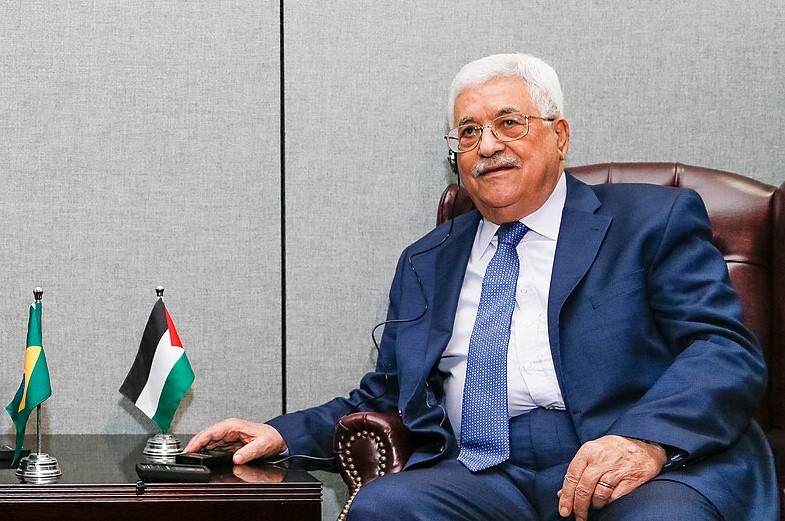 Abbas, President of the PA, has stated that he will not enter Gaza on the back of an Israeli tank / Image: Michel Temer, Wikimedia Commons
Abbas, President of the PA, has stated that he will not enter Gaza on the back of an Israeli tank / Image: Michel Temer, Wikimedia Commons
Israeli defence minister Gallant has stated that there are four stages to this war. The first was the initial three-week heavy aerial bombing campaign. The second is what is happening now, which involves the seeking out of every Hamas base, every fighter, every rocket launcher, and destroying them completely. As we have explained, that is going to take a long time – and may never be fully achieved. But then what?
According to The Times of Israel (29 October, 2023):
“[…] the military is preparing for a third, intermediate stage of fighting during which it will begin to seek out new leadership for the battered enclave, while rooting out ‘pockets of resistance.’
“Only after this lower-intensity conflict, which is also estimated to take several months, Gallant has said, will Israel transition to its final phase: disconnection from the Gaza Strip. […]” (My emphasis)
What does this “disconnection” involve, according to the Israeli government? Here, even Gallant does not know. As the same article points out:
“Apart from saying that neither Israel nor Hamas will control Gaza in the war’s aftermath, the defense minister did not detail what this disconnection would ultimately entail. […] ‘Whatever will be next will be better, whatever it is,’ Gallant said.”
Well, if Gallant has no clue what to do once this war is over, we shall return to Naftali Bennet – who, let us not forget, was very recently the premier of Israel – and see if he can give us an idea of what they are thinking.
In the short-term, he is saying Gaza residents should either all move south – although they are also being bombed there – or actually move out of the Gaza Strip entirely and become refugees for other countries to worry about. This amounts to a threat of actual ethnic cleansing on a massive scale, evoking memories of the 1948 Nakba and the displacement of 750,000 Palestinians pushed out of their homes and villages.
Bennet is aware of this accusation, and therefore suggests that the move would be temporary! And once the total destruction of Gaza City has taken place, the Palestinians will be permitted to return to their non-existent homes. Then Israel would wash its hands of the Gazan Palestinians, ceasing to provide water and electricity, ceasing to trade with the enclave, and cutting it off completely.
That would be the fourth and final stage of this war, which would see, according to Gallant, “the removal of Israel’s responsibility for life in the Gaza Strip, and the establishment of a new security reality for the citizens of Israel”. This – as we have seen – would be guaranteed by a two-kilometre strip, a kind of no man’s land inside the Strip, along the border with Israel.
A war that prepares more wars
Thus, what we are looking at is a long, drawn-out war, with massive destruction of the infrastructure of Gaza, huge numbers of civilian casualties, and then Israel would wash its hands of any future responsibility for Gaza, leaving the Palestinians to their fate. If the people governing Israel today believe this is a solution, they must be living on another planet!
Serious analysts are stating that Hamas cannot be destroyed. Yes, you can kill many of its fighters, you can destroy many of their bases, and you can seek to kill its leadership. The problem is that part of the leadership and its base of support is not in Gaza but based outside. The razing of Gaza City also means that a section of Hamas and its fighters will have prepared bases in the southern part of the Strip, which means the Israeli army would also have to continue the war by heavily bombing the south.
To believe that, in these conditions, the people of Gaza would accept an administration imposed from outside at Israel’s behest is truly to live in a fantasy world. There is one sure thing that the Israeli invasion will achieve, and that is a whole new generation of Palestinians that will have accumulated immense resentment. For every Hamas fighter killed, ten young people will be willing to take up arms as a result of this conflict. The ground will be laid for more and bloodier conflicts between Palestinians and Israelis.
The western imperialists are fully aware of all this, but they are in a very weak position. What is most glaring is how much weaker the United States has become in this situation. Here we have the most powerful imperialist nation the world has ever seen, with a huge military force, and over 700 military bases in around 80 countries worldwide, and yet it is proving incapable of maintaining control over the situation. It is limited to ‘advising’ Netanyahu on what to do, to warning him not to go too far, to think carefully before making any risky moves.
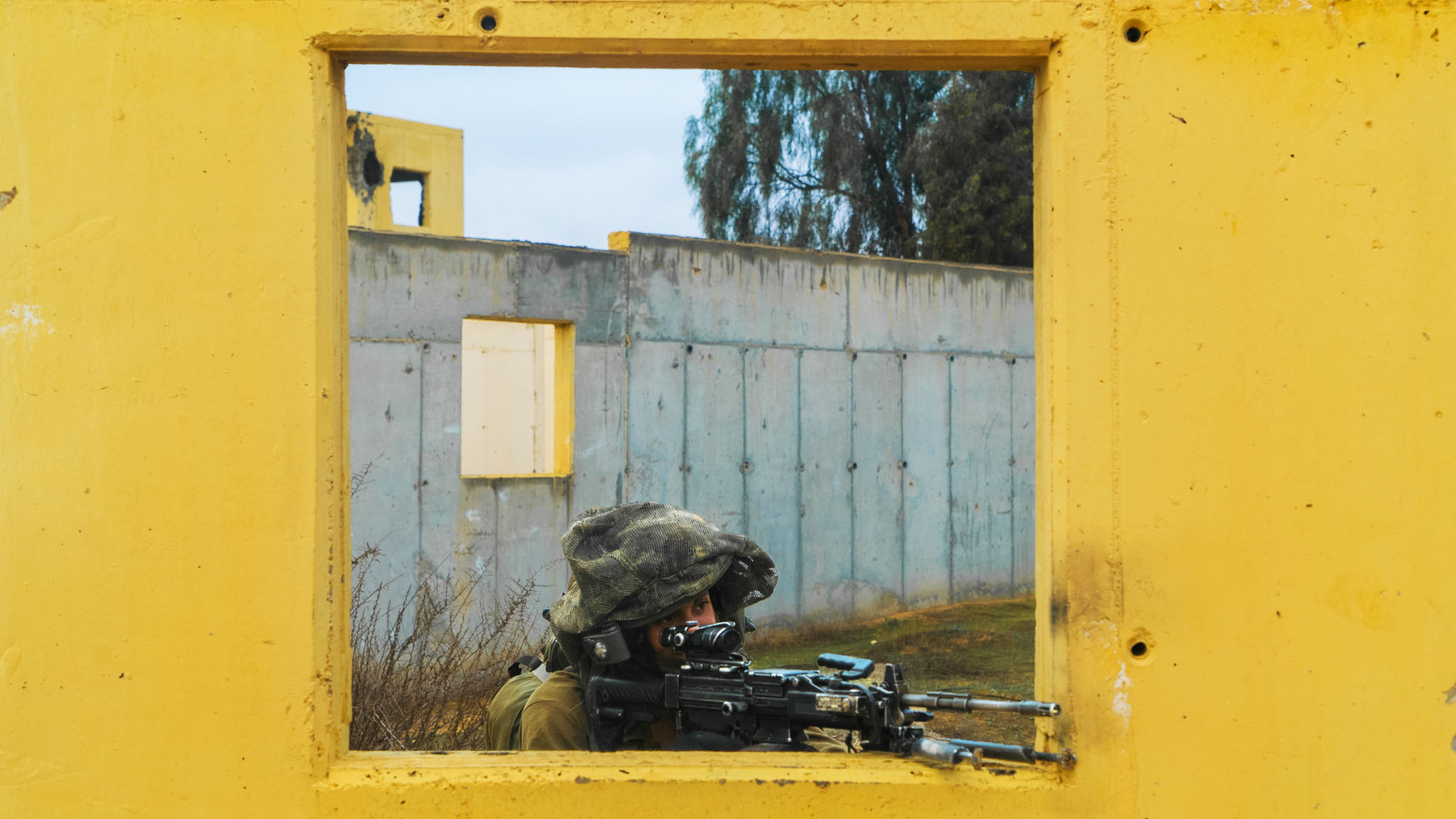 Serious analysts are stating that Hamas cannot be destroyed / Image: IDF, Flickr
Serious analysts are stating that Hamas cannot be destroyed / Image: IDF, Flickr
The weakness of US imperialism is also revealed by what has been going on at the United Nations. Resolutions are presented to the Security Council by the Russians, by the Brazilians, by the US, and they are all vetoed, showing to the world the true nature of that body.
But the recent passing of a non-binding resolution in the General Assembly, calling for a humanitarian truce in Gaza, drafted by Arab states, passed by 120 to 14, with 45 abstentions, although it had no immediate practical consequences, did reveal how much more isolated the US and its allies have become. It reflected a shifting balance of forces between the major powers. The rag-tag 12-country ‘coalition of the willing’ supporting the US and Israel, has enrolled among it such powers as Austria, Hungary, the Marshall Islands and Tonga.
This also explains why Biden is forced to keep repeating the mantra of “humanitarian aid” to Gaza, while still fundamentally backing the Israeli regime. He has even rehashed the position that, once this war is over, a political (rather than military) answer will need to be sought, and that a two-state solution will have to be looked at.
This is just so much talk, because the material basis for a two-state solution has been destroyed by decades of colonisation of the West Bank. This is something the western media prefer not to highlight too much. Prior to the Hamas attack in the south of Israel, the IDF had been concentrating its military operations in the West Bank, and for what purpose? It was to back up the continued encroachment of the Jewish settlers on Palestinian land.
Up to this summer, around 200 Palestinians had been killed by Israeli military and settlers, most of them in the West Bank. This was part of a systematic push to establish more and more settlements, which has led to a situation where Palestinians in the West Bank fear for their lives as they attempt to work their land. Even olive picking in their own fields has become dangerous.
Back in June, the Netanyahu government fast-tracked approval for thousands of new housing units for settlers on the West Bank (see Israel to ramp up settlement expansion in occupied West Bank). This was all before the October Hamas attack. Since then, taking advantage of the situation, armed settlers have been ramping up their operations, fully backed by the IDF. This has led to over 100 Palestinians being killed on the West Bank. The programme of illegal settlements, rather than being slowed, is being massively accelerated. It is a fact that, already today, there is no single unified Palestinian territory to speak of. Thus, the political solution that Biden refers to does not exist.
The present nightmare scenario facing the Palestinian people was prepared by Netanyahu and all of the Zionist ruling class, with the backing of US imperialism and of all the western imperialist powers, from Britain, to France, to Germany, and all the other minor powers that have lined up behind the fig leaf of “Israel’s right to defend itself”.
When looking at a war such as the present one taking place in Gaza, Marxists do not sink to the level of trying to work out “who started it”. We will not ignore the 75 years of brutal occupation that preceded the 7 October attack and join the Zionist and imperialist chorus laying the sole responsibility at the feet of Hamas. The logic of this is to blame the people of Gaza for the nightmare they are presently suffering: akin to blaming the victim of a crime.
This conflict is the continuation of a policy that has roots preceding the establishment of Israel in 1948, when 750,000 Palestinians were ethnically cleansed out of their homeland. And in this historical conflict, it is the Palestinian people that have been deprived of a homeland, and have been fighting back, as more and more of their land has been taken away from them.
Today, the Palestinian people are being reminded of the Nakba like never before. And the Zionist ruling class is not even hiding the fact that it supports the colonisation of the West Bank, in particular. They were proceeding with this policy before 7 October, and they are now ramping it up even further, with more than 700,000 Jewish settlers living in the West Bank, East Jerusalem and the Golan Heights (occupied Syrian territory).
That is what this war is about: the Palestinian people have been murdered, harassed, kicked off their land, and, in Gaza, driven to desperation and enclosed in a giant open air prison. And communists must explain all this; they must use all their forces, all their energy, and the limited means at our disposal, to counter the barrage of propaganda of the capitalist class everywhere.
However, it is not enough to counter this propaganda. Just as it is not enough to call for a ceasefire (which in any case the Israelis and their imperialist backers have no intention of granting), much less a “humanitarian pause”, which the treacherous reformists and a section of the imperialists call for to permit a trickle of aid into Gaza, after which the butchery is to continue. We, as communists, are not fighting for a return to the very situation that led to the present destruction of Gaza and the killing of thousands.
We must explain that the plight of the Palestinian people flows from capitalism itself. It is this system in crisis that produces wars, such as the Ukraine war and the war in Yemen. They all flow from a system that should long ago have been buried. The peoples of the Middle East instinctively sympathise for the Palestinian people, and many among them would be prepared to fight in defence of their rights.
But the ruling elites of the region, from Cairo to Riyadh, and all the others, have no interest in genuinely fighting for a free Palestine. They are the oppressors of their own people, and they fear that any involvement in the conflict on the side of Palestine could inflame the situation at home, putting their power and privileges under threat. Judging by the massive protests that have erupted across the Arab world in solidarity with Palestine, this is a justified fear.
Communists explain that a solution to the present crisis can only be found through the class struggle across the region, of the workers and poor against the rich and powerful, and against their own rotten governments. By bringing all these struggles together one can begin to see the outlines of a future Socialist Federation of the Middle East, which would finally put an end to decades of war and destruction.
Moreover, the oppression of the Palestinians has become a focal point for the anger of workers and youth around the world, including in the imperialist countries, which have also seen huge protests, in defiance of bourgeois repression and slander. This makes the present conflict a factor in the world struggle of the working class.
